

Open Migration - I dati per capire. TODAY'S CRISIS. Cartes sur Table : comprendre les migrations vers l'Europe. Transports, mobilités. DESTINATIONS & ORIGINS OF PEOPLE. Migranti: sono l'11% della forza lavoro (più che in Germania) ma pagano caro il prezzo della crisi. ROMA - Sono 2,7 milioni.

Valgono 123 miliardi di Pil. Producono il 9% della ricchezza italiana. E rappresentano quasi l'11% della forza lavoro in Italia. Si chiamano Mohammed, Vasile, Hanaa, Dimitru, Ioana. Migranti, l'integrazione degli stranieri in Italia: tutti i grafici interattivi di Openpolis. This map helps explain why some European countries reject refugees, and others love them. As hundreds of Germans held up "Welcome Refugees" signs last weekend, much of Europe watched in bewilderment.
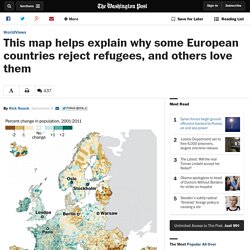
“Germany is the only country that is welcoming us,” said Alalie, a 37-year-old from Damascus, Syria, and one of the thousands of refugees who arrived at the main train station in Munich. Nearly all of the refugees had come from Hungary — a country with restrictive immigration policies and where many said the authorities had treated them inhumanely. But why are there such deep divides within Europe? Why do some countries welcome refugees, while others do everything they can to keep them out?
[For six migrants, Europe offers ‘last hope’] Identités et migrations. International Organization for Migration. The GLOBAL MIGRATION FLOWS interactive app tracks migrants around the world.
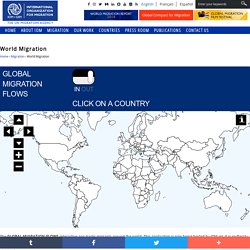
This application is now being hosted by IOM.int. It is endlessly fascinating to explore where we're from. The underlying data for the map was published by the UN DESA in 2015. Exploitation. TODAY'S CRISIS. Dalla Libia all’Italia solo 2mila arrivi in più. Solo duemila e ottanta in più rispetto al 29 agosto dell’anno scorso.
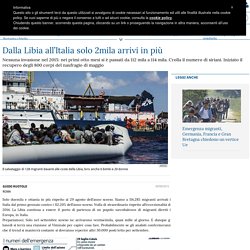
Siamo a 114.285 migranti arrivati in Italia dal primo gennaio contro i 112.205 dell’anno scorso. Nulla di straordinario rispetto all’eccezionalità del 2014. La Libia continua a essere il porto di partenza di un popolo «arcobaleno» di migranti diretti in Europa, in Italia. Anche gli europei migrano: una mappa lo dimostra. L’Europa sarà vecchia, ma non immobile.

A guardare la mappa della BBSR, istituto federale di ricerca tedesco che studia gli edifici e lo sviluppo urbano e dello spazio, tra il 2001 e il 2011 ci sono stati diversi cambiamenti. Lo studio comprende la popolazione di ogni municipalità europea, e i dati sono i più aggiornati possibile (il 2011 è il più recente – per tutti i Paesi). La mappa è questa: Migranti, le venti cose da sapere - CorriereMezzogiorno.corriere.it/ Worldwide displacement hits all-time high as war and persecution increase. News Stories, 18 June 2015 Global Trends 2014 GENEVA, June 18 (UNHCR) – Wars, conflict and persecution have forced more people than at any other time since records began to flee their homes and seek refuge and safety elsewhere, according to a new report from the UN refugee agency.
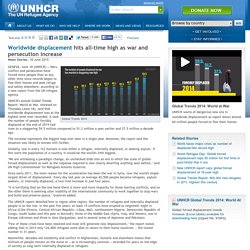
UNHCR's annual Global Trends Report: World at War, released on Thursday (June 18), said that worldwide displacement was at the highest level ever recorded. It said the number of people forcibly displaced at the end of 2014 had risen to a staggering 59.5 million compared to 51.2 million a year earlier and 37.5 million a decade ago. New U.N. report says world’s refugee crisis is worse than anyone expected. LONDON — The number of people uprooted from their homes by war and persecution in 2014 was larger than in any year since detailed record-keeping began, according to a comprehensive report released early Thursday by the U.N. refugee agency that will add to the evidence of a global exodus unlike any in modern times.
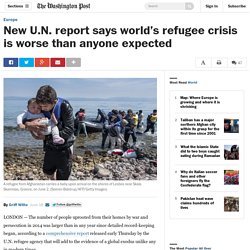
Just a year after the number of refugees, asylum-seekers and people forced to flee within their own countries surpassed 50 million for the first time since World War II, it surged to nearly 60 million in 2014 — “a nation of the displaced” that is roughly equal to the population of the United Kingdom. The rapidly escalating figures reflect a world of renewed conflict, with wars in the Middle East, Africa, Asia and Europe driving families and individuals from their homes in desperate flights for safety. [Tiny Gambia has a big export: Migrants desperate to reach Europe] The annual report on global trends in displacement, issued by the Office of the U.N.
Read more: The Flight of Refugees Around the Globe. Human Costs of Border Control. Perché nessuno parla dell'Eritrea. Lunedì scorso le Nazioni Unite hanno diffuso un documento che sintetizza i risultati di un anno di indagini sulla situazione dei diritti umani in Eritrea, paese dell’Africa orientale che confina a sud con Gibuti, a nord con il Sudan e ovest con l’Etiopia.
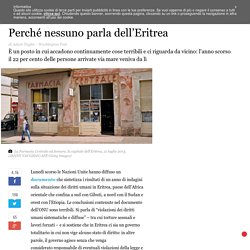
Le conclusioni contenute nel documento dell’ONU sono terribili. Si parla di “violazioni dei diritti umani sistematiche e diffuse” – tra cui torture sessuali e lavori forzati – e si sostiene che in Eritrea ci sia un governo totalitario in cui non vige alcuno stato di diritto: in altre parole, il governo agisce senza che venga considerato responsabile di eventuali violazioni della legge e senza dover rendere conto a nessuno di quello che fa.
La situazione dell’Eritrea riguarda direttamente anche l’Italia, e non solo per il passato coloniale: nel 2014 il 22 per cento delle persone che sono arrivate in territorio italiano via mare provenivano dall’Eritrea. L’Eritrea ha un’altra particolarità: il turismo. Migration: Are more people on the move than ever before? From the Mediterranean to the Andaman, it's been a season of despair, the faces of migrants haunting television screens and dominating headlines.

Harrowing stories have emerged of death, starvation and abuse at the hands of people smugglers. And from the world's new and continuing conflict zones, there have been new mass movements, across borders and within states. Half a million Yemenis have been internally displaced since March. One hundred thousand Burundians have fled into neighbouring countries since April.